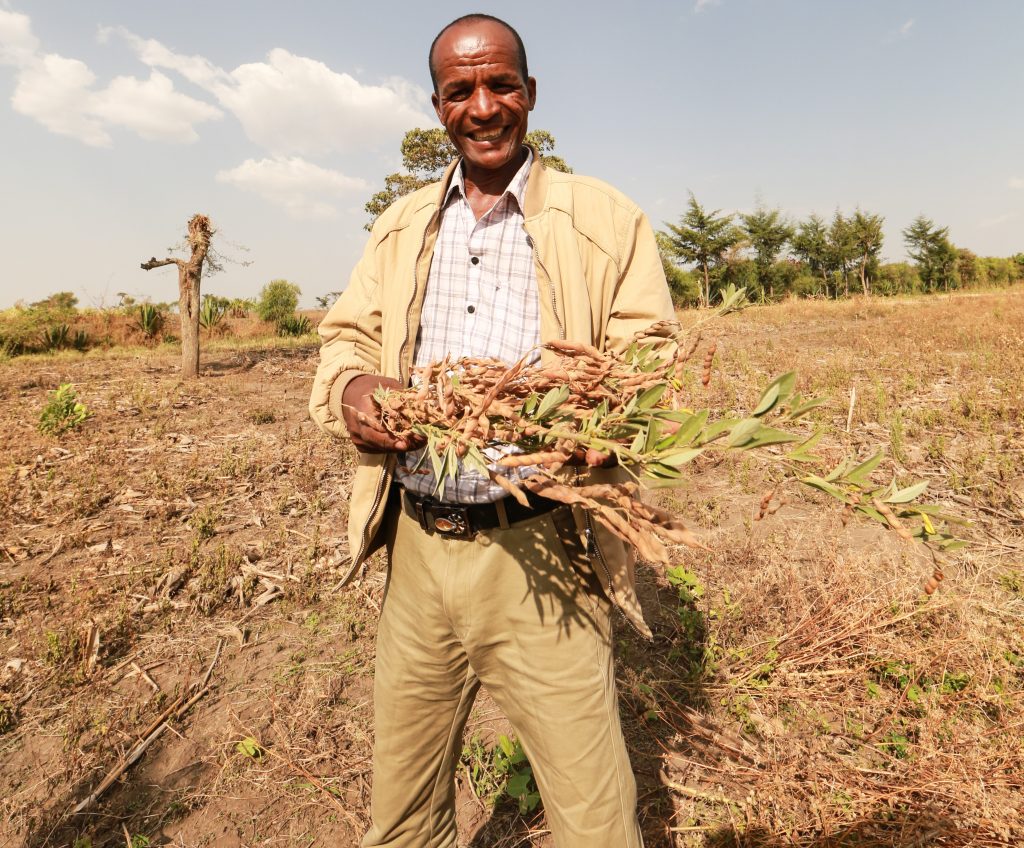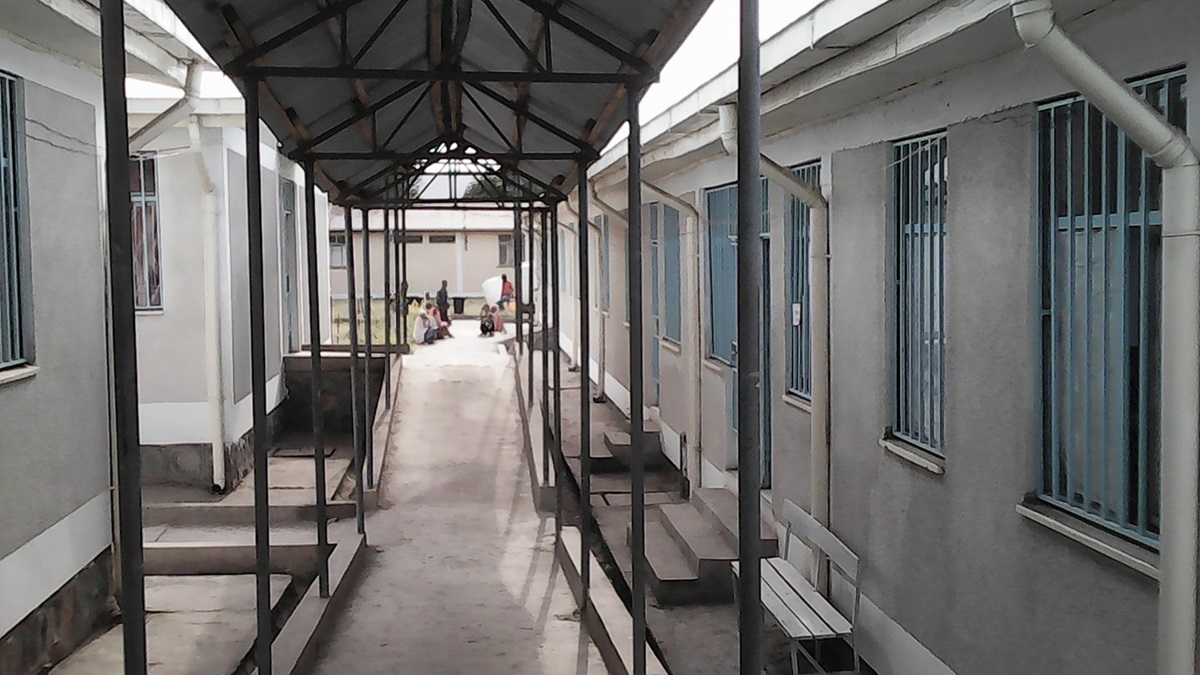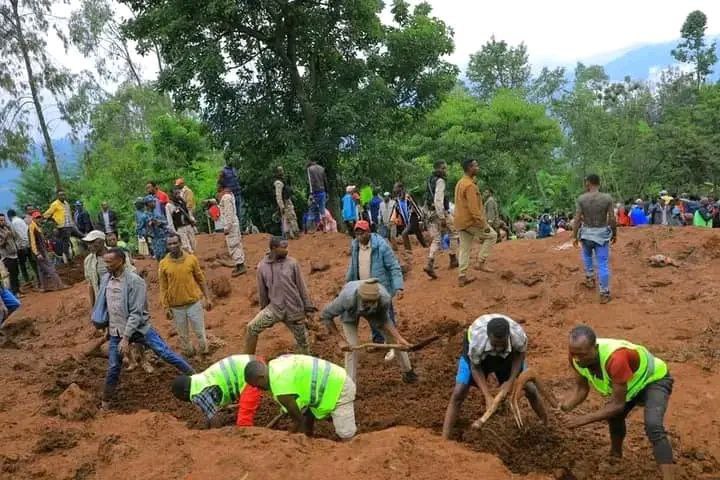Analysis: food security project supports model farmers in Ethiopia

since implementing CA-based practices in 2011 (Photo: Apollo Habtamu)
Sophie Reeve
Addis Abeba/Hawassa January 21/2019 – Ethiopia’s agriculture is complex, involving substantial variation in crops grown across the country’s regions and ecologies. And although there has been significant growth in the cultivation of cereal crops over the last decade, by international standards, yields are low, and overall production is highly susceptible to weather shocks, such as droughts. As such, food security has become a serious challenge for much of the population.
By promoting ‘conservation agriculture’ (CA)-based practices, the Sustainable Intensification of Maize-Legume Cropping Systems for Food Security in Eastern and Southern Africa (SIMLESA) project has been working in Ethiopia, Kenya, Malawi, Mozambique and Tanzania to improve crop productivity and household food security. The techniques promoted by the project, such as crop residue retention, intercropping of maize and legumes, and production of substantial feed crops, are helping smallholder farmers to reduce their agricultural risks and increase yields.
Community role models
In Boricha district, south of Hawassa in Ethiopia, smallholder farmer Ermiyas Bonge used to struggle to produce reliable yields due to climate variability. However, since implementing the CA-based practices 7 years ago, he has been able to boost production and enhance his climate resilience. “I used to experience crop failure year after year because of drought,” Ermiyas says, “but, since adopting the SIMLESA technologies, I do not till my land, I retain the crop residues and I grow two or more crops together. The combination of these factors has increased water infiltration into the soil. Therefore, soil-water holding capacity and soil fertility has improved. Now, production is sustainable and we don’t have crop failures,” he explains.

sustainably and now has feed for his livestock year round (Photo: Pollo
Habtamu).
Ermiyas has worked with SIMLESA as a model farmer for 7 years, training others in how to apply the sustainable CA practices. Ermiyas has been particularly active in teaching others how to produce feed crops to provide to livestock as an alternative to crop residue, as he feels this meets a need within the community. “In dry periods, there is no feed, but I have been able to produce forage which I can sell to others or use as feed for my own livestock, so the most important benefit from SIMLESA for me has been the production of sustainable forage resources,” he explains. “Farmers need improved forage to adopt CA practices. Unless they have improved forage they don’t retain residue on the field.”
Ermiyas has trained more than 100 farmers to produce improved forage crops, such as pigeon pea, and says around 30 farmers from the local community have already bought improved forage varieties from him and are cultivating the crops. A further 25 farmers have adopted the practice of minimum tillage to reduce soil erosion and improve the fertility of their soil.
Inspiring women farmers
Over 7,000 women-led household farmers have also adopted SIMLESA practices in Ethiopia. Fate Hirpho in Shalla district, for instance, has been implementing the techniques since 2011. Fate practices reduced tillage, intercropping of maize and legumes, and residue retention on her fields, explains Bedru Abdi, Country Coordinator for SIMLESA in Ethiopia. “I used to just grow maize, but with the knowledge I learned from SIMLESA, I have included beans, millet and sorghum. Before adopting the practices, I used to get 1.6 tons per hectare of maize, now I get 3.2 tons per hectare,” she says. “I have trained more than 300 farmers in the various CA practices. There are many farmers who are aspiring to be like me and who want to change their lives,” says Fate.
Bedru acknowledges that accessing agricultural information and inputs is more challenging for women than it is for men due to higher illiteracy levels among women and less time to attend social engagements. However, he states, “We have a large population of women farmers and we wanted to work with a role model for men as well as women.”
Furthermore, as the practices do not require the use of oxen, and because residue is retained on the fields, less fertilizer is required, Fate asserts that the CA techniques can be adopted by anyone. “The practices are easily applied because of the reduced expense and labor costs compared to traditional practices. I encourage women to take up the CA-based techniques,” she says. AS








